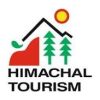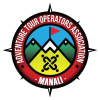- OVERVIEW
- ITINERARY
- INCLUDED
- EQUIPMENT
- DEPARTURE
- REVIEWS
TRIP OVERVIEW
The Miyar Valley, located in the Indian part of the Great Himalaya Range, stretches for over 100 km from Udaipur to the Kang La. The locals – the Tharanga people – are mainly shepherds and farmers much like the Gaddis but follow a curious mix of Hindu/Buddhist religion.
It is the westernmost of the Lahul valley‘s on the watershed between the Lahul & Zanskar in Ladakh, it’s known for its profusion of wildflowers and medicinal herbs especially during July and August, and its breathtaking landscape of quaint villages and rolling meadows which are replaced by glaciers and big rock walls as you move deeper into the valley. In recent years the valley has also attracted a lot of climbing teams (Teams from Slovenia, Poland, Italy, US, UK & India, and Spanish too, It is hosts hundreds of peaks that are, by Himalayan standards, accessible and low in altitude, with very few exceeding 6000 m. As a result, Alpine-style routes are possible here that have a technical standard not normally seen in the Himalayas. The wealth of climbing possibilities here led Chris Bonington to dub it as “the Yosemite of India”
Famous peaks in the area are: Menthosa 6443mtrs / 21260ft is the largest peak in the area. For trekkers, the Udaipur (Urgos road-head) -Kang La -Padum (Zanskar traverse) is quite popular another viable option is to link up the Chandra Valley and Miyar via the Taralumsa pass. Another interesting option would be the crossing of the Poat La pass which would link up the Kishtwar Region to the Miyar Valley.
TRIP FACTS
Region – Miyar valley, Himachal Pradesh, Zanskar region – Ladakh, India, Difficulty Level – Moderate to Strenuous, Max Altitude – 5450 m, Trip Length – 17 days Delhi to Delhi, 11 days Manali to Manali, 8 days of trekking, Activity – Trekking expedition, Best time – Mid June to mid-Oct
ITINERARY
Day 1: Manali to Rohtang la pass (3,978m) – Udaipur (2650m) – Chamrat (2,090m) – Urgos (3,300m). Drive
Day 2: Trek Shukto (3450m) – Khanjar (3520m) – Tharang (3,700m)
Day 3: Trek Gumba nallah (3,800m) – Zardung (3880m)
Day 4: Trek Palphu / Snout of Kang La glacier base camp (3950m)
Day 5: At Moraine camp – Acclimatization – trek to Takdung glacier
Day 6: Trek to Glacier camp 1 Dali got / Tawa glacier (4,200m)
Day 7: Trek to Glacier camp 2 Jangpar glacier/ Base Kang la Jot (4750m)
Day 8: Cross Kang la jot (5450 m) – North base Kanjur / Chimi Chenmo (4800m)
Day 9: Trek Burdan, Drive to Purney
Day 10: Purney to Keylong drive, over Shinkun La
Day 11: Keylong to Rohtang La – Manali.
Padum to Leh Extension
Day 9: Trek Burdan, Drive to Padum (3600m)
Day 10: Drive via Pensi la (4400m) to Rangdum
Day 11: Drive Mulbekh – Lamayuru – Alchi – Leh (3600m)
COST INCLUDES
- All ground transportation to & fro as per the itinerary. Delhi & Leh airport transfer, Leh sightseeing.
- Hotel accommodation in Delhi, Manali, Leh (Room + Breakfast)
- All camping facilities: Mess tent, camp chairs, and table.
- Accommodation in quality 4 season tents, sleeping bags, foam mattress, trekking poles & safety gears.
- Meals on full board (Breakfast, Lunch, and Dinner) Tea, snacks during the trek
- Qualified & trained well English speaking trekking guide and experienced crew.
- Porters or mules for porterage of gear & duffel bags
- Camping fee, trekking permits, and fee, park fee.
- First aid medical kit, Oximeter to check pulse, heart rate, and oxygen saturation at higher altitude.
- Goods and services tax.
COST EXCLUDES
- Domestic flight. Delhi – Leh, Leh – Delhi
- Rest of the hotel in Delhi and Leh.
- Travel insurance.
- Soft or hard drinks.
- Equipment rentals
- Personal tip to staff: Guide, cook, helper, horseman, driver.
- Any unforeseen cost arises by natural hazards rain, snow, roadblock which cost extra lodging & boarding beyond trip Schedule.
ITINERARY
Day 1: Manali to Rohtang la pass (3,978m) – Udaipur (2650m) – Chamrat (2,090m) – Urgos (3,300m). Drive 7-8 Hrs.
Starting the trip from Manali, at the head of the lush green Kullu valley. The road slowly winds up the Rohtang-la pass (3’978m.), the first of the high passes, then down into the Lahoul valley. The landscape changes dramatically, the greenery being replaced by barren hillsides, where the village with its bountiful fields of barley, peas, and potatoes, stand out in stark contrast. On entering Lahoul the Buddhist influence is visible in the many monasteries crossed on the way. The people here have distinct Tibetan features. Today we drive along the Chenab River. On the way, we visit the famous Trilok Nath temple and Mrikula Devi temple at Udaipur. From Udaipur follow a road, which has recently been constructed, through the narrow gorge making the entrance to Miyar valley. Cross the wooden bridge before Chamrat and continue on the true left bank of the valley. The village of Chamrat is with Mani walls and prayer flags is the first village in the Miyar valley. Now road leads through flowered meadows and peas and millet fields to the village of Karpat. Urgos is at the confluence with the valley leading to Mt. Menthosa (6,443m), overnight homestay.
Day 2: Trek Shukto (3450m) – Khanjar (3520m) – Tharang (3,700m)
Leaving Urgos, we drive 6 km to Shukto – Khanjar bridge or you can trek on this route, across a stony moraine stretch and some side streams to Khanjar, the last village. above the village on a beautiful alpine meadow, carpeted with edelweiss and catmint. It is not rare to see the Himalayan Griffins and Lammergeyers.
There are lovely pastures all along the trek up to the camping site. The trek continues to the left side of the stream. A side stream coming from the Tharang glacier mingles here with the Miyar nullah. The camp is established here for tonight.
Day 3: Trek to Gumba nallah (3,800m) – Zardung (3880m)
Leaving Tharang base camp, crossing of ford and through boulders and to vast alpine meadows of Gumba. During summer all these areas carpeted with flowers. After hiking for two hours you reach Gumba nallah (3,800m) and cross the bridge and ascend gradually. Continue through the alpine pasture to Zardung campsite. Tharang group of 6000+ peaks remain insight this all day. There is a Takdung glacier stream to be cross next day and afternoon the level of the stream goes up. We camp before this stream in order to cross tomorrow when the level of water will be convenient for crossing.
Day 4: Trek to Palphu / Snout of Kang La glacier base camp (3950m)
Leaving early Takdung nallah to be cross this morning. After crossing an easy trail below the castle peak to Kesar Hunchap. Pimu nallah and Pimu la can be seen across the Miyar nallah. After lunch at Kesar Hunchap, another stream coming from Chodung glacier to be cross. It’s not so far from the campsite from here. Crystal clear lake short before our wonderful campsite at the foot of Kang La glacier. For those who are interested in bouldering, there is a number of boulders suitable for rock climbers. The entire Miyar valley is a favorite grazing area and Shepherds can be seen all across the valley, who know many trails that are not yet marked on maps. Arriving at camp, relax and explore around.
Day 5: At Moraine camp / Palphu – Acclimatize
Day 6: Trek to Glacier camp 1 Dali got / Tawa glacier (4,200m)
Today from camp climb steep along the slopes for about an hour than along the left side of the glacier for hours. Finally, descend to glacier and cross it to the campsite. The first view of the Kang la glacier can be obtained from here.
Day 7: Trek to Glacier camp 2 Jangpar glacier/ Base Kang la Jot (4750m)
Miyar glacier, which is 28 km long, from camp at the snout glacier there is a choice of route. Walk across the terminal moraine to the left side of the glacier, route tiring ups and downs along an increasingly ill-defined trail. Demanding terrains for the first 7/8 km until the confluence with a glacier flowing from the Eastside, easy going from here with a gradual ascent over smooth black ice. An occasional well-exposed crevasses to negotiate. Camp just above the confluence with the side glacier, there are 3 passes, and the center one is the actual pass.
Day 8: Cross Kang la jot (5450 m) – North base Kanjur / Chimi Chenmo (4800m)
A magnificent views down the valley to Menthosa 6443m. At the head of the glacier, a large snowfield curves to the Eastside to the base of the pass. 250 m ascent from the snowfield to the pass is not hard. Better to rope up to crossing crevasses, than 1.5 km long Kang la pass enclosed by rock cliff to the north and snow walls to the south. After crossing Kang la pass camp near the two confluences of the 2 streams.
Day 9: Trek Burdan, Drive to Purney.
Now follow the true right side of the valley. After crossing the many side streams and grassy campsites, 2/3 km down the valley. Arriving at a rocky plateau, the trail descends steeply in places through meadows and boulder fields. Tenasa Tokpo remains on the right bank, it flows down to a grassy meadow above the Tsarap River. Continue for 2 hrs to reach Burdan and drive to Purney for overnight stay.
Day 10: Purney to Keylong drive, over Shinkun La
Today after breakfast we drive along with the Kurgiakh chu and cross small villages of Southern Zanskar and arrive at Lakhong and the road goes up to Shinkun La pass and descent to Zanskar Sumdo. A good road will take us to Darcha and continue to Jispa and Keylong.
Day 11: Keylong to Rohtang La – Manali.
A short drive of 4 hrs to reach Manali from Keylong via Atal Rohtang tunnel to Manali.
___________________________
Padum to Leh Extension
Day 9: Trek Burdan, Drive to Padum.
Now follow the true right side of the valley. After crossing the many side streams and grassy campsites, 2/3 km down the valley. Arriving at a rocky plateau, the trail descends steeply in places through meadows and boulder fields. Tenasa Tokpo remains on the right bank, it flows down to a grassy meadow above the Tsarap River. Continue for 2 hrs to reach Burdan.
Our vehicles will be waiting for us at Bardan to transfer (1 hour) along the road to Padum, the district headquarters of Zanskar. From Padum we trek for approximately 2½ hours on an easy trail, through villages and fields to the large village of Karsha. The monastery here is the largest in Zanskar and houses many statues and thankas (religious paintings), while its library contains priceless ancient Buddhist manuscripts. The monastery is very dramatically located high on the side of a cliff overlooking the fields of the Zanskar Valley 350 meters below. We set up our tents in the village camping ground.
Day 10: Drive via Pensi la (4400m) to Rangdum
It is now time to leave this wild and remote valley. We board our jeeps and drive on a rough road that climbs to the 4400 meters Pensi La, the gateway between Ladakh and Zanskar. From the top of the pass, there are close-up views of the Drung Drung glacier. Descending from the Pensi La we reach Rangdum (3657m), the first habitation in the Suru valley. Above the village is the Rangdum monastery, situated on top of a small ‘sugarloaf’ hill at an altitude of 4031 meters. We make our camp near the monastery.
Day 11: Drive Mulbekh – Lamayuru – Alchi – Leh (3600m)
Continue along the Suru River valley we pass numbers of small settlements and continue to the fascinating ‘big sky’ landscape of Ladakh to the village of Mulbekh, famous for its 9 meter-high rock carving of Maitreya Buddha, believed to have been sculpted in the 8th century by visiting missionaries spreading the word of Buddhism. Close by is the monastery consisting of two gompas, one of the Drukpa and one of the Gelugpa sect of Buddhism. We complete our trans-Himalayan journey, driving on the National Highway to the Ladkhi capital of Leh. En route, we will stop at Alchi Gompa, one of the oldest monastic complexes in Ladakh. Located on the south bank of the Indus River, there are four major structures including the three-story Sum-tsek, which contains a magnificent giant four-armed Bodhisattva occupying two of the three floors. After our visit here it is a further 70km to Leh where we check into our hotel and can enjoy the trappings of civilization with a clean up before sitting down to a celebratory dinner. Approximately 5 hours driving.
ITINERARY
Day 1: Manali to Rohtang la pass (3,978m) – Udaipur (2650m) – Chamrat (2,090m) – Urgos (3,300m). Drive 7-8 Hrs.
Starting the trip from Manali, at the head of the lush green Kullu valley. The road slowly winds up the Rohtang-la pass (3’978m.), the first of the high passes, then down into the Lahoul valley. The landscape changes dramatically, the greenery being replaced by barren hillsides, where the village with its bountiful fields of barley, peas, and potatoes, stand out in stark contrast. On entering Lahoul the Buddhist influence is visible in the many monasteries crossed on the way. The people here have distinct Tibetan features. Today we drive along the Chenab River. On the way, we visit the famous Trilok Nath temple and Mrikula Devi temple at Udaipur. From Udaipur follow a road, which has recently been constructed, through the narrow gorge making the entrance to Miyar valley. Cross the wooden bridge before Chamrat and continue on the true left bank of the valley. The village of Chamrat is with Mani walls and prayer flags is the first village in the Miyar valley. Now road leads through flowered meadows and peas and millet fields to the village of Karpat. Urgos is at the confluence with the valley leading to Mt. Menthosa (6,443m), overnight homestay.
Day 2: Trek Shukto (3450m) – Khanjar (3520m) – Tharang (3,700m)
Leaving Urgos, we drive 6 km to Shukto – Khanjar bridge or you can trek on this route, across a stony moraine stretch and some side streams to Khanjar, the last village. above the village on a beautiful alpine meadow, carpeted with edelweiss and catmint. It is not rare to see the Himalayan Griffins and Lammergeyers.
There are lovely pastures all along the trek up to the camping site. The trek continues to the left side of the stream. A side stream coming from the Tharang glacier mingles here with the Miyar nullah. The camp is established here for tonight.
Day 3: Trek to Gumba nallah (3,800m) – Zardung (3880m)
Leaving Tharang base camp, crossing of ford and through boulders and to vast alpine meadows of Gumba. During summer all these areas carpeted with flowers. After hiking for two hours you reach Gumba nallah (3,800m) and cross the bridge and ascend gradually. Continue through the alpine pasture to Zardung campsite. Tharang group of 6000+ peaks remain insight this all day. There is a Takdung glacier stream to be cross next day and afternoon the level of the stream goes up. We camp before this stream in order to cross tomorrow when the level of water will be convenient for crossing.
Day 4: Trek to Palphu / Snout of Kang La glacier base camp (3950m)
Leaving early Takdung nallah to be cross this morning. After crossing an easy trail below the castle peak to Kesar Hunchap. Pimu nallah and Pimu la can be seen across the Miyar nallah. After lunch at Kesar Hunchap, another stream coming from Chodung glacier to be cross. It’s not so far from the campsite from here. Crystal clear lake short before our wonderful campsite at the foot of Kang La glacier. For those who are interested in bouldering, there is a number of boulders suitable for rock climbers. The entire Miyar valley is a favorite grazing area and Shepherds can be seen all across the valley, who know many trails that are not yet marked on maps. Arriving at camp, relax and explore around.
Day 5: At Moraine camp / Palphu – Acclimatize
Day 6: Trek to Glacier camp 1 Dali got / Tawa glacier (4,200m)
Today from camp climb steep along the slopes for about an hour than along the left side of the glacier for hours. Finally, descend to glacier and cross it to the campsite. The first view of the Kang la glacier can be obtained from here.
Day 7: Trek to Glacier camp 2 Jangpar glacier/ Base Kang la Jot (4750m)
Miyar glacier, which is 28 km long, from camp at the snout glacier there is a choice of route. Walk across the terminal moraine to the left side of the glacier, route tiring ups and downs along an increasingly ill-defined trail. Demanding terrains for the first 7/8 km until the confluence with a glacier flowing from the Eastside, easy going from here with a gradual ascent over smooth black ice. An occasional well-exposed crevasses to negotiate. Camp just above the confluence with the side glacier, there are 3 passes, and the center one is the actual pass.
Day 8: Cross Kang la jot (5450 m) – North base Kanjur / Chimi Chenmo (4800m)
A magnificent views down the valley to Menthosa 6443m. At the head of the glacier, a large snowfield curves to the Eastside to the base of the pass. 250 m ascent from the snowfield to the pass is not hard. Better to rope up to crossing crevasses, than 1.5 km long Kang la pass enclosed by rock cliff to the north and snow walls to the south. After crossing Kang la pass camp near the two confluences of the 2 streams.
Day 9: Trek Burdan, Drive to Purney.
Now follow the true right side of the valley. After crossing the many side streams and grassy campsites, 2/3 km down the valley. Arriving at a rocky plateau, the trail descends steeply in places through meadows and boulder fields. Tenasa Tokpo remains on the right bank, it flows down to a grassy meadow above the Tsarap River. Continue for 2 hrs to reach Burdan and drive to Purney for overnight stay.
Day 10: Purney to Keylong drive, over Shinkun La
Today after breakfast we drive along with the Kurgiakh chu and cross small villages of Southern Zanskar and arrive at Lakhong and the road goes up to Shinkun La pass and descent to Zanskar Sumdo. A good road will take us to Darcha and continue to Jispa and Keylong.
Day 11: Keylong to Rohtang La – Manali.
A short drive of 4 hrs to reach Manali from Keylong via Atal Rohtang tunnel to Manali.
___________________________
Padum to Leh Extension
Day 9: Trek Burdan, Drive to Padum.
Now follow the true right side of the valley. After crossing the many side streams and grassy campsites, 2/3 km down the valley. Arriving at a rocky plateau, the trail descends steeply in places through meadows and boulder fields. Tenasa Tokpo remains on the right bank, it flows down to a grassy meadow above the Tsarap River. Continue for 2 hrs to reach Burdan.
Our vehicles will be waiting for us at Bardan to transfer (1 hour) along the road to Padum, the district headquarters of Zanskar. From Padum we trek for approximately 2½ hours on an easy trail, through villages and fields to the large village of Karsha. The monastery here is the largest in Zanskar and houses many statues and thankas (religious paintings), while its library contains priceless ancient Buddhist manuscripts. The monastery is very dramatically located high on the side of a cliff overlooking the fields of the Zanskar Valley 350 meters below. We set up our tents in the village camping ground.
Day 10: Drive via Pensi la (4400m) to Rangdum
It is now time to leave this wild and remote valley. We board our jeeps and drive on a rough road that climbs to the 4400 meters Pensi La, the gateway between Ladakh and Zanskar. From the top of the pass, there are close-up views of the Drung Drung glacier. Descending from the Pensi La we reach Rangdum (3657m), the first habitation in the Suru valley. Above the village is the Rangdum monastery, situated on top of a small ‘sugarloaf’ hill at an altitude of 4031 meters. We make our camp near the monastery.
Day 11: Drive Mulbekh – Lamayuru – Alchi – Leh (3600m)
Continue along the Suru River valley we pass numbers of small settlements and continue to the fascinating ‘big sky’ landscape of Ladakh to the village of Mulbekh, famous for its 9 meter-high rock carving of Maitreya Buddha, believed to have been sculpted in the 8th century by visiting missionaries spreading the word of Buddhism. Close by is the monastery consisting of two gompas, one of the Drukpa and one of the Gelugpa sect of Buddhism. We complete our trans-Himalayan journey, driving on the National Highway to the Ladkhi capital of Leh. En route, we will stop at Alchi Gompa, one of the oldest monastic complexes in Ladakh. Located on the south bank of the Indus River, there are four major structures including the three-story Sum-tsek, which contains a magnificent giant four-armed Bodhisattva occupying two of the three floors. After our visit here it is a further 70km to Leh where we check into our hotel and can enjoy the trappings of civilization with a clean up before sitting down to a celebratory dinner. Approximately 5 hours driving.
COST INCLUDES
- All ground transportation to & fro as per the itinerary. Delhi & Leh airport transfer, Leh sightseeing.
- Hotel accommodation in Delhi, Manali, Leh (Room + Breakfast)
- All camping facilities: Mess tent, camp chairs, and table.
- Accommodation in quality 4 season tents, sleeping bags, foam mattress, trekking poles & safety gears.
- Meals on full board (Breakfast, Lunch, and Dinner) Tea, snacks during the trek
- Qualified & trained well English speaking trekking guide and experienced crew.
- Porters or mules for porterage of gear & duffel bags
- Camping fee, trekking permits, and fee, park fee.
- First aid medical kit, Oximeter to check pulse, heart rate, and oxygen saturation at higher altitude.
- Goods and services tax.
COST EXCLUDES
- Domestic flight. Delhi – Leh, Leh – Delhi
- Rest of the hotel in Delhi and Leh.
- Travel insurance.
- Soft or hard drinks.
- Equipment rentals
- Personal tip to staff: Guide, cook, helper, horseman, driver.
- Any unforeseen cost arises by natural hazards rain, snow, roadblock which cost extra lodging & boarding beyond trip Schedule.
Trekking Gear
What we provide
We provide all the GROUP GEAR included in the following list:
3-4 Person roomy 4 season tents for 2 – 3 people and individual as well, dining tent, toilet tent and other camping accessories.
Sleeping bags and comfortable foam mattresses.
Kitchen tent, Stoves, fuel, cookware etc.
Bed tea, nutritious breakfast, three course meal (dinner), packed lunch, post trek snacks, tea and coffee.
Trekking poles and Duffel bags for your luggage’s.
Basic first aid box and mini oxygen bottles
What you may need – Your personal gear recommended in List :-
Day pack: A bit of bigger size 30 – 40 liters in order to keep fleece, jacket, water bottle, camera, packed lunch
Foot wear :-
Good condition trekking boots – not new used before in your country side for best fit for trekking, water proof.
Camp shoes, light and comfortable as running shoes or sandal ( like Teva ) for river crossing. Its necessity for you to bring sandals for river crossing.
Socks both Woolen and cotton as desire.
Clothing :-
Gore tex jacket or similar.
Down jacket/vest is good for cool evenings.
Wind/Rain jacket: (i.e. gore-tex, northface or similar) waterproof and breathable. Its necessity to have jacket while crossing passes.
Trekking pants, light, comfortable, water proof /breathable.
Long sleeve shirt Light weight dry-fast (for sun/insect protection).
Thermal innerwear winter thermal innerwear.
T-shirts for day time.
One mid weight/heavyweight fleece (long sleeve) jacket or warm pullover.
Short pants, underwear.
Sun Hat: cowboy style or baseball style to protect skin from direct sunlight.
Woolen cap for high altitude or while crossing pass or during evenings in camp.
One fleece or sweatpants for cold evenings during dining.
A pair of Hand gloves or woolen gloves.
Scarf to protect from dust or sunlight around neck. This is available in local markets with variety of colors.
Accessories :-
Sun glasses with UV protection. An extra sun glass in case to replace.
Sun screen and lip protection.
Moisturizer cream: In Ladakh the air is dry and sun is harsh and strong during day. There are local moisturizer cream available in market. To avoid somehow skin allergy bring your personal cream.
Water bottle. Minimum I – 2 liter.
Trekking poles or sticks. If you have your own folded poles.
Torch or one head lamp with extra batteries. Petzl or similar.
One toiletries kit, small towel.
Reading and writing materials.
Digital Camera or digital video recorder / solar charger.
Water purification tablets.
Nylon or water proof plastic bags to storage clothes and stuff.
One pocket knife light.
Others :-
Gaiter / personal climbing gear. (Can rent at Manali or Leh or Uttarkashi).
Water purification/filter: we boil water for you in the camp, what its essential you to have a water purification tablets or filter during the day of trekking.
Mosquito repellent cream.
Small Binocular.
First aid kit: We carry basic first aid kit with diamox, aspirin, paracetamol, antibiotics for diarrhea, antiseptic, bandage and band aids, Please you bring your personal first aid kit with medicine you think to need necessity for you.
Vitamin tablets or similar.
Extra passport photos.
11 DAYS TREKKING IN HIMACHAL PRADESH
Price on request
Ask for student & group discount
Call / WhatsApp 7807198706







